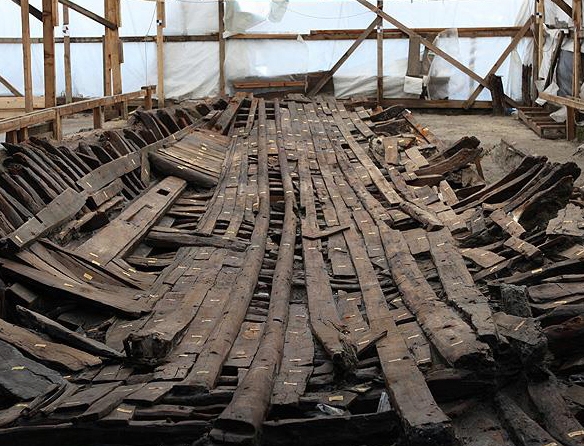Yenikapi
Marmaray and Metro construction projects were carried out to serve as the largest rail public transportation network in our country. During these projects, It is observed that this port has carried sediment filling of the ancient Lykos stream for many years. The port lost its function as a result of these transports. Thirty-three shipwrecks have been found in the Yenikapı shipwreck project, thanks to the studies conducted. Archaeological studies were initiated about the shipwrecks found. These studies are continued under a program called the Istanbul University Yenikapı Shipwrecks Project. Besides, the Yenikapı sunken ship research is supported by the Department of Conservation and Restoration of Istanbul University Movable Cultural Property.
Yenikapı Shipwrecks Reflect the Byzantine Period
Yenikapı sunken ship region is shown as one of the ancient boat collections with sunken ships that can be called the world's few. The Yenikapı sunken ship area provides information about the Byzantine ship typology. Also to shipbuilding technologies, unique information about the evolution of this technology was also learned in the Yenikapı sunken ship excavations. Scientists working in this field consider this archaeological work carried out in the Yenikapı shipwrecks as the most important project of recent times. Reflecting on the importance of our country in history, the Yenikapı sunken ship project is very important for the work carried out on shipwrecks so far. In these important studies, the project director, Asst. Assoc. Dr. Ufuk Kocabaş became. At the same time, Kocabaş compiled it in Volume 1 of the series titled "The Old Ships of Yenikapı", which he edited. This journal has been presented to the scientific world in English / Turkish.
Publications on Yenikapı Shipwrecks
The book, published by Ege Yayınları, provides information about the ongoing Yenikapı shipwrecks project. It aims to introduce the scientific methods used in the studies and provides preliminary information about the technological features of the shipwrecks. Also in the other major benefits of the project along with the first contribution to the scientific literature in the field in Turkey "Ancient Ship Laboratory of Conservation and Reconstruction 'to start work on are described in this book.
The shipwreck laboratory, which has been operating under Istanbul University, is also very important. Considering the development stages of the technical equipment of the mentioned laboratory and the studies carried out on the Yenikapı shipwreck museum that is planned to be built in the future, it is seen that this dynamic project is not limited to field studies.

